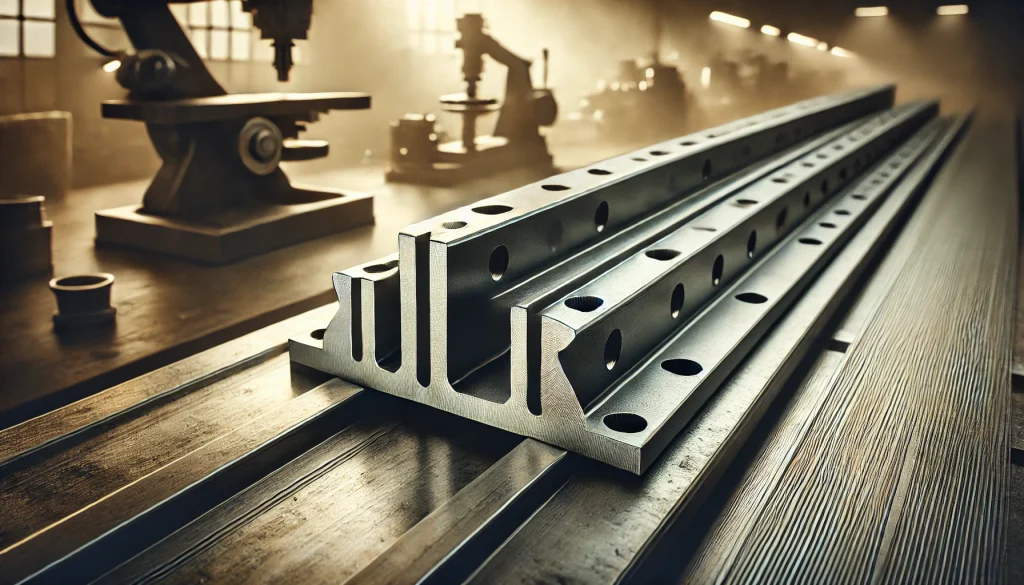
In many engineering and construction applications, slotted angle plates are crucial parts that can be used as adaptable building blocks for a wide range of structures. A number of slots run the length of these plates, which are usually composed of sturdy materials like steel or aluminum. Because of the design’s ease of assembly and disassembly, frameworks are useful in a variety of contexts, from DIY projects to industrial manufacturing.
One of the main factors contributing to their growing appeal among engineers, architects, & enthusiasts alike is their versatility. Slotted angle plates are now widely used in contemporary fabrication & construction because they offer a strong yet adaptable framework-building solution. Slotted angle plates’ distinctive design improves their usefulness and efficiency in a range of applications. Fasteners can be inserted into the slots at various angles and locations, giving users the ability to construct intricate structures with ease.
This adaptability is especially useful in settings where changes might be required because it enables rapid adjustments without the need for specialized equipment or a lot of rework. As industries continue to change and require more creative solutions, slotted angle plates are a sensible option that can be used for both individual projects and large-scale operations. Slotted angle plates’ slots perform a variety of tasks that improve their usefulness and efficiency during building and assembly. First & foremost, these slots offer a way to firmly fasten parts together while preserving some degree of flexibility.
Because it allows users to fine-tune the positioning of different elements within a structure, this adjustability is essential in applications where precision alignment is required. Even small adjustments can be made without sacrificing the integrity of the entire assembly thanks to the ability to slide fasteners along the slots. This is especially crucial in dynamic environments where conditions are subject to change. Also, the stability & overall strength of the assembled structure are enhanced by the slots’ design.
Through more uniform load distribution across the plate, the slots reduce stress concentrations that may eventually cause failure. In heavy-duty applications where structural integrity is crucial, this is particularly pertinent. Slotted angle plates’ strength and adjustability make them the perfect option for a variety of projects, from straightforward shelving units to intricate machinery frames. Therefore, anyone hoping to make effective use of slotted angle plates must comprehend how these slots work. One of the most important benefits of slotted angle plates is the guiding function of the slots.
Fasteners are guided along a predefined path when inserted into these slots, ensuring correct alignment with other parts. When putting together large structures, where accuracy is crucial, this advice is especially helpful. The slots serve as channels to keep fasteners oriented correctly, lowering the possibility of misalignment that can jeopardize the assembly’s stability. This feature helps workers finish tasks more quickly, which is especially helpful in industrial settings where time is frequently of the essence. The slots are essential for securing fasteners in place as well as for directing them.
A strong connection between components can be achieved by tightening a fastener after it has been positioned within a slot. Due to the slot’s design, different fastener types, including bolts, screws, and nuts, can be used interchangeably, giving assembly options more flexibility. Because of its adaptability, users can choose the best fastener for their particular use, whether they need a more temporary fix or a high-strength connection. In the end, the slots’ guidance and security improve the overall dependability and functionality of structures constructed with slotted angle plates. The significance of slots in slotted angle plates for industrial and construction applications cannot be emphasized enough. These slots allow for quick assembly and disassembly, which is especially useful in settings where efficiency and time are crucial considerations.
For instance, slotted angle plates enable rapid adjustments without requiring a lot of downtime in manufacturing environments where production lines may need to be rearranged frequently. Compared to traditional assembly methods, which may call for more sophisticated tools or procedures, this flexibility not only saves time but also lowers labor costs. Slots also improve safety in industrial and construction settings.
Slotted angle plates contribute to the construction of structures that can sustain loads and operational stresses by enabling accurate adjustments and safe fastening. In sectors like aerospace and automotive manufacturing, where even small structural flaws can have disastrous results, this is particularly crucial. Engineers can design systems that are safe and effective, which eventually improves overall performance and dependability, by developing sturdy frameworks with movable parts. With slotted angle plates, a large range of fasteners can be used, each with special advantages based on the demands of a given project.
Fasteners that are frequently used include washers, nuts, bolts, and screws; they are all simple to insert into the slots for safe connections. Because of their strength and capacity to support large loads, bolts are especially well-liked in industrial settings where maintaining structural integrity is crucial. Screws also offer lighter assemblies a more permanent solution that enables fast installation while retaining a firm grip.
A permanent fastening solution that can tolerate a lot of stress is provided by rivets, another type of fastener that is frequently used with slotted angle plates. In applications where movement or vibration may eventually cause other fasteners to loosen, rivets are particularly helpful. Also, to increase assembly configuration versatility, specialty fasteners like anchor bolts or T-nuts can be used. With the variety of fasteners available, users can customize their strategy according to load requirements, environmental factors, and the assembly’s intended permanence.
Easy to assemble and use. Beyond their fundamental functionality, slotted angle plates have many other advantages that make them a desirable option for both professional and amateur builders. Even people with little experience can quickly learn how to assemble structures using these plates, which is a major advantage.
Installation is simple and doesn’t require specialized equipment or a lot of training thanks to the user-friendly design. An Affordable Option for Do-It-Yourselfers. Because of their accessibility, slotted angle plates are a great choice for do-it-yourselfers who want to build unique projects at home. Also, building frameworks with slotted angle plates is a very economical option. Because they are modular, users don’t have to buy numerous specialized parts to create a variety of structures. Versatility and Waste Reduction.
Rather, an amazing variety of configurations that are suited to particular requirements can be produced by combining a few slotted angle plates with different fasteners. Because of its versatility, users can reuse existing components for new projects, which minimizes waste and lowers material costs. Slotted angle plates are therefore a cost-effective option without sacrificing functionality or quality. To guarantee optimal performance and compatibility with project requirements, a number of factors should be taken into account when choosing slotted angle plates for a given application. In order to accommodate particular fasteners or structural elements, different projects may require different distances between slots, making the size and spacing of the slots themselves a crucial factor.
Selecting plates with slot configurations that correspond with the intended use is crucial in order to prevent assembly issues or possible structural weaknesses. The composition of the material used to make the slotted angle plates is another crucial factor. Although aluminum may be favored in applications where weight reduction is essential, steel still provides superior strength and durability. Environmental factors should also be taken into consideration when evaluating corrosion resistance; for example, outdoor or high-humidity environments may require stainless steel or galvanized steel options. Prior to making a choice, users can make sure they select slotted angle plates that will provide long-lasting performance and effectively meet their needs by carefully weighing these factors.
Finally, it should be noted that slotted angle plates are an impressive combination of industrial and construction applications’ usefulness and versatility. Their special slot design improves structural integrity by enabling accurate adjustments during installation, in addition to making assembly simple. Slotted angle plates stand out as a crucial tool for engineers and builders alike as industries continue to change and require more flexible solutions.
Their adaptability to different fasteners emphasizes how useful they are for a range of projects. The significance of comprehending the operation of slots in slotted angle plates cannot be emphasized enough. Users can fully utilize these components in their projects by acknowledging their function in directing and securing fasteners while offering design flexibility. Slotted angle plates provide a practical solution that satisfies a variety of requirements while guaranteeing safety and dependability in building procedures, whether they are utilized in extensive industrial settings or small do-it-yourself projects.

